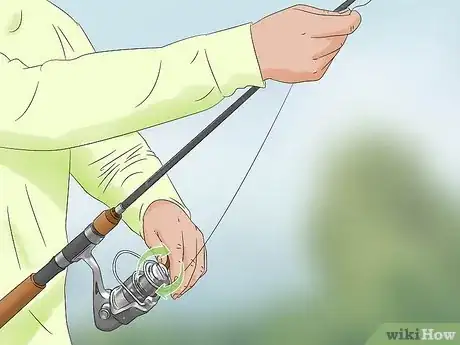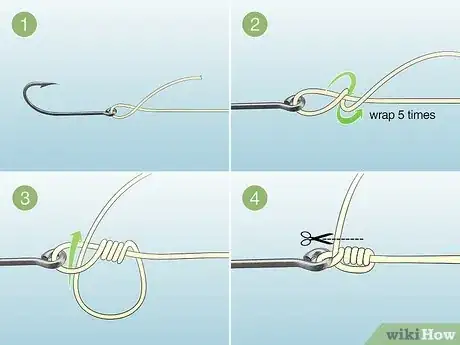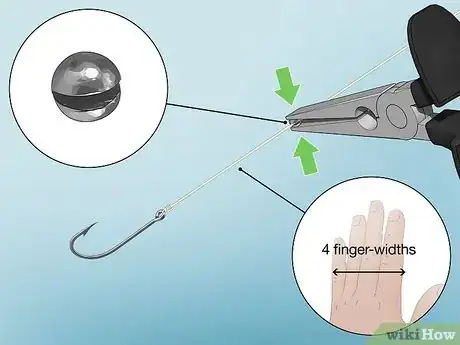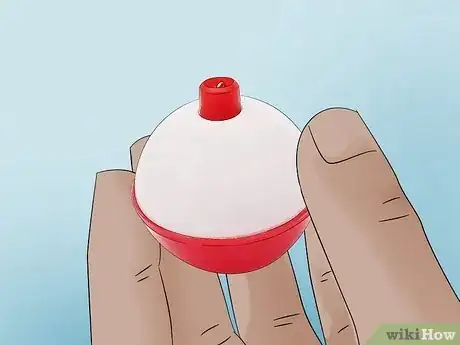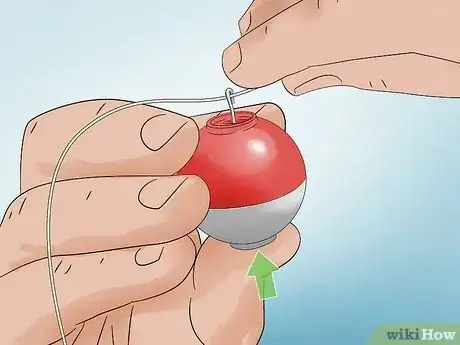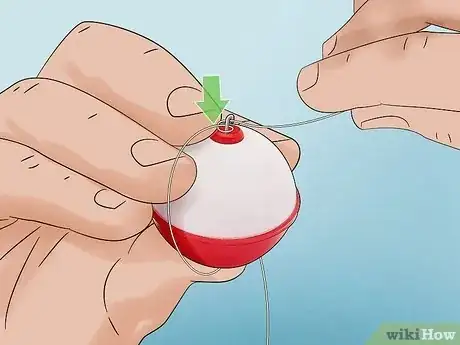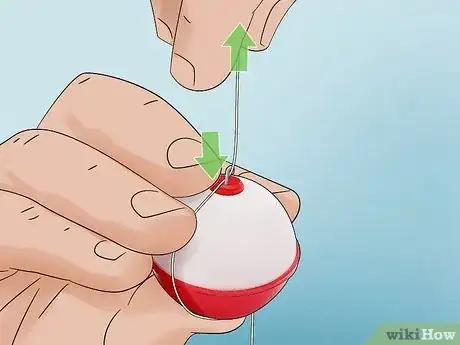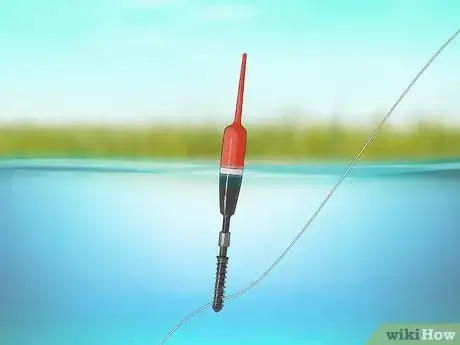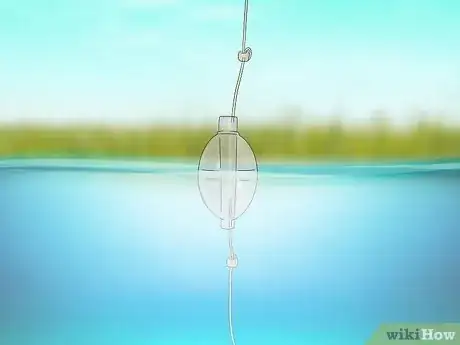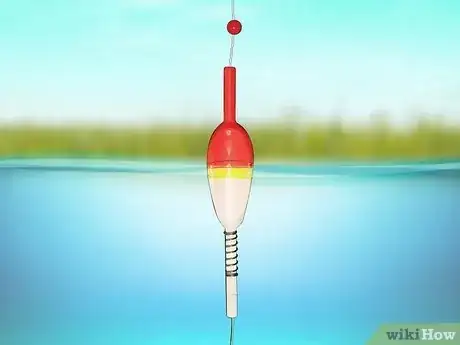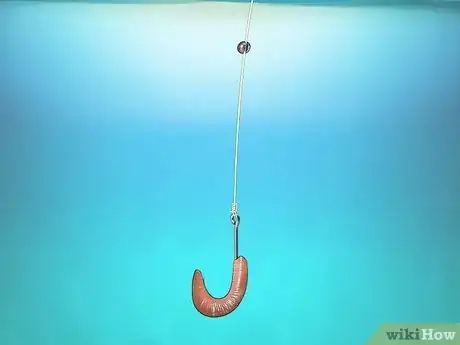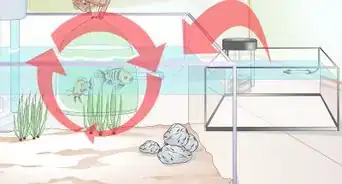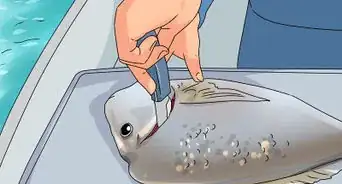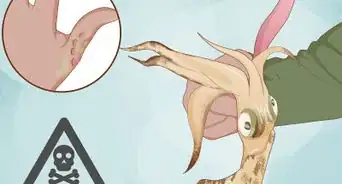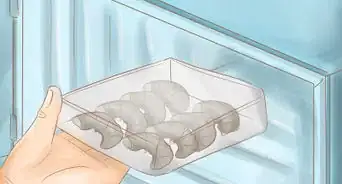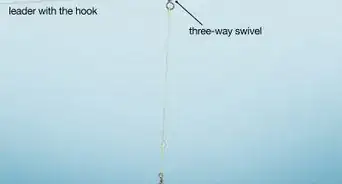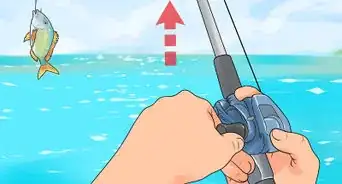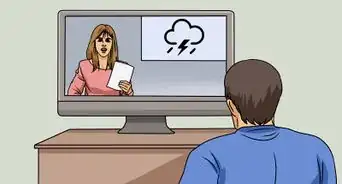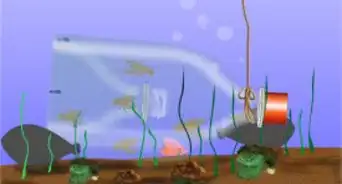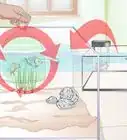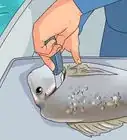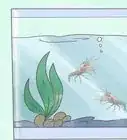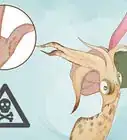This article was written by Kathy Sparrow, MA and by wikiHow staff writer, Hunter Rising. Kathy Sparrow is a fly-fishing instructor and adventurer at heart. Kathy is the co-founder and previous manager of the Kingfisher Inn, a fly-fishing lodge on the Lower Laguna Madre in Texas. She is the author of "On the Mother Lagoon: Flyfishing and the Spiritual Journey" and "The Whispered Teachings of Grandmother Trout” a novel conveying the feminine perspective of fly fishing. Kathy is also a Certified Canfield Trainer in Canfield Methodologies. She guides individuals through the process of embracing change by expressing confidence, awareness, and courage through the tools of writing, fly fishing, and intentional conversation. She has a MA in English with an emphasis in Literature and Cultural Studies from the University of Texas-Pan American.
There are 12 references cited in this article, which can be found at the bottom of the page.
This article has been viewed 33,357 times.
If you’re out fishing and want to know when a fish bites, a bobber will let you know as soon as one strikes. Attaching a bobber to your fishing line is a skill any angler should know, and it’s really easy to do even if you’re just a beginner. Keep reading to learn everything you need to know so you can start catching fish!
This article is based on an interview with our fly-fishing instructor, Kathy Sparrow, MA. Check out the full interview here.
Steps
Expert Q&A
-
QuestionHow do I choose a fishing line?
 Kathy Sparrow, MAKathy Sparrow is a fly-fishing instructor and adventurer at heart. Kathy is the co-founder and previous manager of the Kingfisher Inn, a fly-fishing lodge on the Lower Laguna Madre in Texas. She is the author of "On the Mother Lagoon: Flyfishing and the Spiritual Journey" and "The Whispered Teachings of Grandmother Trout” a novel conveying the feminine perspective of fly fishing. Kathy is also a Certified Canfield Trainer in Canfield Methodologies. She guides individuals through the process of embracing change by expressing confidence, awareness, and courage through the tools of writing, fly fishing, and intentional conversation. She has a MA in English with an emphasis in Literature and Cultural Studies from the University of Texas-Pan American.
Kathy Sparrow, MAKathy Sparrow is a fly-fishing instructor and adventurer at heart. Kathy is the co-founder and previous manager of the Kingfisher Inn, a fly-fishing lodge on the Lower Laguna Madre in Texas. She is the author of "On the Mother Lagoon: Flyfishing and the Spiritual Journey" and "The Whispered Teachings of Grandmother Trout” a novel conveying the feminine perspective of fly fishing. Kathy is also a Certified Canfield Trainer in Canfield Methodologies. She guides individuals through the process of embracing change by expressing confidence, awareness, and courage through the tools of writing, fly fishing, and intentional conversation. She has a MA in English with an emphasis in Literature and Cultural Studies from the University of Texas-Pan American.
Fishing Instructor Choose a line that's made for the type of water you're fishing in that day. Use saltwater fishing line for saltwater, and freshwater fishing line for freshwater. Additionally, it's important to check whether or not your fishing line is for tropical (warmer) water or colder water so you can use the line that's perfect for the body of water you're fishing in.
Choose a line that's made for the type of water you're fishing in that day. Use saltwater fishing line for saltwater, and freshwater fishing line for freshwater. Additionally, it's important to check whether or not your fishing line is for tropical (warmer) water or colder water so you can use the line that's perfect for the body of water you're fishing in.
References
- ↑ https://youtu.be/tqealmYlTEk?t=47
- ↑ https://www.takemefishing.org/how-to-fish/fishing-gear-and-tackle/fishing-hook-sizes/
- ↑ https://youtu.be/KCDwLA9JEHw?t=28
- ↑ https://orbitfishing.com/how-to-pick-the-right-sinker-weight/
- ↑ https://fishing.scoutlife.org/catch-fish-worm-bobber/
- ↑ https://www.takemefishing.org/how-to-fish/fishing-knots-and-rigs/how-to-make-your-own-fishing-rigs/
- ↑ https://youtu.be/9vAmL-FK_A0?t=26
- ↑ https://youtu.be/LlzvkVUvYBs?t=75
- ↑ https://fishingkris.com/how-to-set-up-fishing-pole-with-a-bobber/
